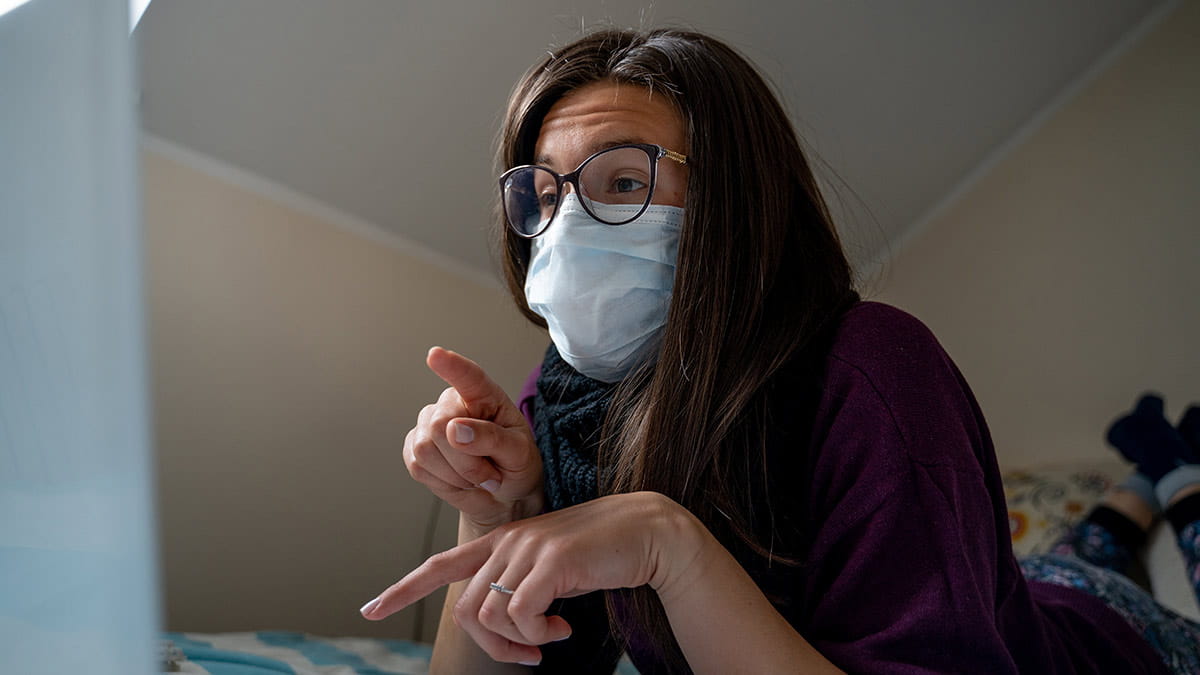What you should know about Bell's palsy

It can be puzzling and even a little scary to look in the mirror and notice one side of your face isn’t moving. This can be a sign of Bell’s palsy, a sudden weakness or paralysis of facial muscles. Not to worry – most of the time it’s temporary.
What it is
About 40,000 people get this each year. While we’re not exactly sure what causes Bell’s palsy, we suspect it’s due to a viral infection that causes inflammation and swelling of the facial nerve that serves the affected muscles. Anyone can get it (including celebrities such as George Clooney and Angelina Jolie), although we tend to see Bell’s palsy more in diabetics, women who are pregnant or have recently given birth, or people with an upper respiratory infection such as a cold or flu. It’s also been associated with chronic middle ear infection, high blood pressure, Lyme disease and head trauma.
Symptoms
Bell’s palsy comes on quickly – within a few to 48 hours. The severity and symptoms can vary from mild weakness to total paralysis on one side of the face. Someone might experience facial muscle twitching, weakness, drooping of the eyelid or at the corner of the mouth, difficulty making facial expressions or blinking. Some people may have dizziness, pain around the jaw or in the ear, a change in taste perception and decreased tear production. Often you’ll notice significant facial distortion on the affected side.
Treating Bell’s palsy
Start with visiting your primary care doctor to rule out other potential causes of facial muscle weakness. This could lead to an evaluation with an otolaryngologist (ENT), neurologist and/or a facial plastic surgeon, as well as diagnostic tests such as imaging or electromyography.
It’s important to take excellent care of the affected eye, starting right away. Keep it well hydrated by using artificial tear drops as well as eye ointment at night. Use a moisture chamber, which is a plastic bubble worn over the eye to trap moisture and prevent drying.
There is some evidence that early use of oral steroids, such as prednisone, may shorten the duration and improve the outcome. Some physicians also prescribe anti-viral medication, although there isn’t much data to support this. Physical therapists or speech pathologists might also recommend some facial exercises to help speed the recovery process.
Most people recover completely with or without treatment. Improvement is gradual and recovery can vary from several weeks to six months, depending on the extent of nerve damage.
There was a time when physicians were more aggressive about doing facial nerve decompression surgery to improve outcomes. Now, our diagnostic tests provide more information about nerve damage and likely outcomes, so a surgical approach is rarely necessary.
If you suspect you might have Bell’s palsy, see your doctor when symptoms arise to rule out other illnesses and get help managing its effects.
Aaron Moberly is an otolaryngologist at The Ohio State University Wexner Medical Center.




